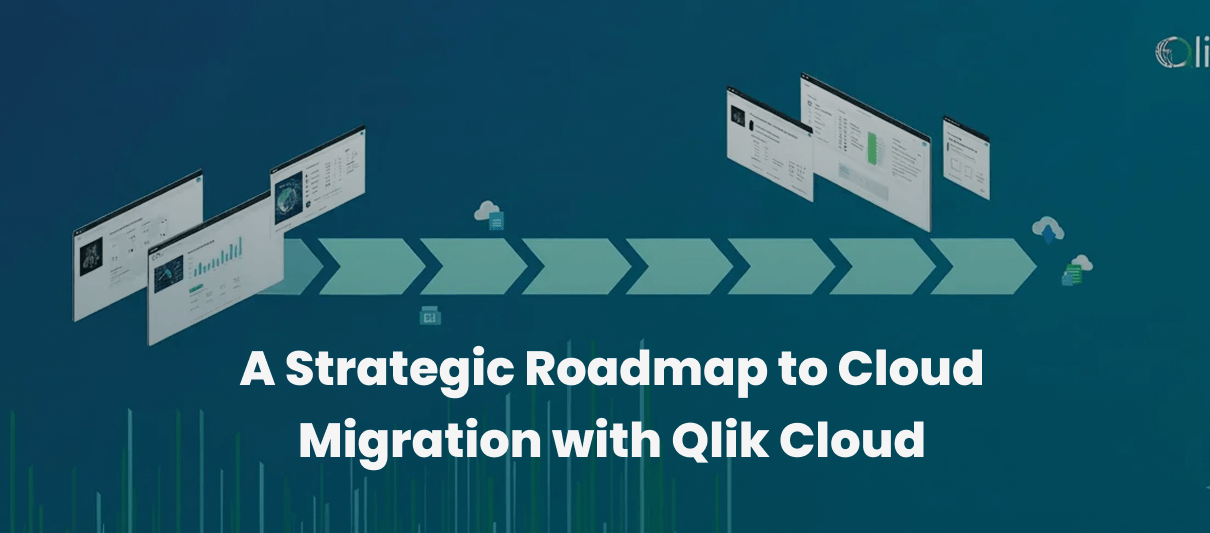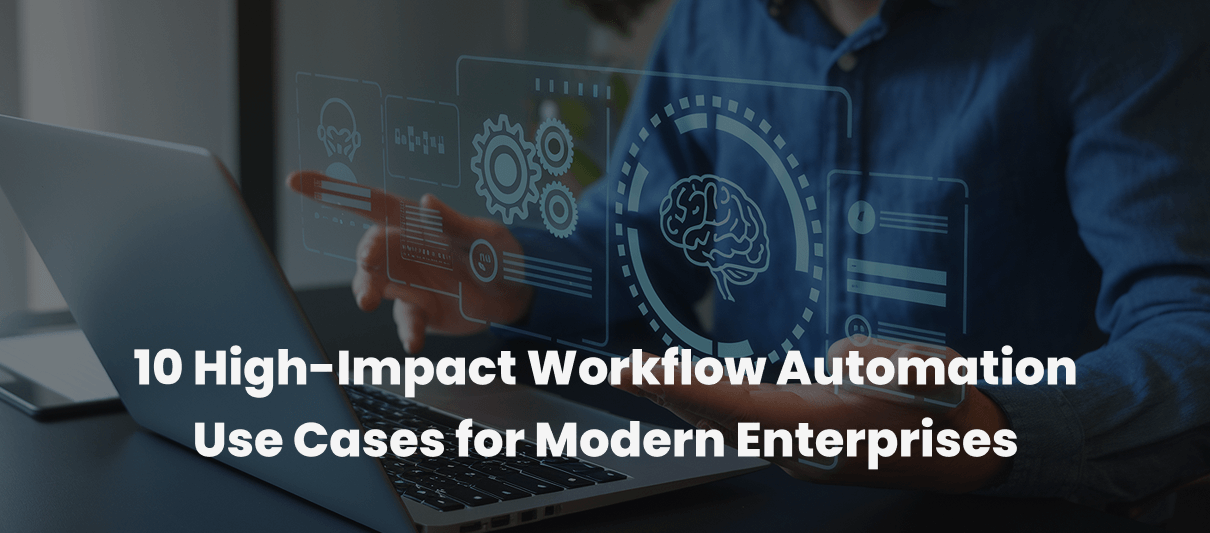Optimising Financial Operations with Microsoft Fabric -Exploring the Use Cases and Benefits
The finance sector is constantly evolving, introducing diverse, complex financial operations such as digital banking, fintech services, fraud and risk management, and investment analysis. These modern-day financial services, while enhancing the employee and customer experience, involve large volumes of data, intricate business functions, and advanced computing processes. This complexity demands meticulous attention to every detail, from data analysis to operational efficiency to regulatory compliance to fraud risk monitoring. The gravity of these challenges necessitates a strategic approach and advanced business solutions that can adapt to the dynamic requirements of financial operations while delivering superior business performance.
Microsoft Fabric is not just a platform; it is a strategic approach to optimise and streamline financial operations. It provides professionals with a unified platform to analyse, identify, and monitor business performance. More importantly, it’s an integrated analytics solution that can adapt to the dynamic requirements of financial operations, ensuring accurate and strategic financial decisions devoid of errors, discrepancies and compliance gaps.
Significance of Optimising Financial Operations
As an intricate sector, every business process in a financial operation is crucial and challenging. Optimising them will help organisations gain the following:
Strategic Insights: To understand financial performance and efficiency, organisations need strong and up-to-date information, which can be delivered only through advanced analytics and reporting capabilities. A well-optimised financial operation will help drive informed decisions that are futuristic and valuable to identify challenges and opportunities.
Streamlined Processes: Simplifying financial operations will help reduce redundancies and dependencies and automate repetitive and monotonous workflows. Organisations can standardise data entry procedures, document verification approaches, and other business processes, thereby helping professionals focus on strategic goals and objectives.
Compliance and Risk Management: Maintaining regulatory adherence, monitoring compliance gaps and implementing accounting standards per location-based law are essential for organisations operating in a cross-border environment. It also helps organisations present transparent, accurate and clear reporting and auditing details. Thus, by adhering to strict compliance and regulatory management, financial operations can ensure that they are well-adhered to the latest laws and regulations important to keeping threats and breaches at bay.
Exploring the Power of Microsoft Fabric: Functions and Features Explained
One common aspect of achieving all the above-mentioned financial operations is data. Handling and managing data is itself a business function, requiring an advanced platform on which organisations can perform every operation, from analysis to reporting. Microsoft’s new addition, Fabric, is a powerful data analytics management system that helps organisations manage, handle, analyse, and monitor data. It also encourages data scientists, engineers, and analysts to work on a single platform, ensuring data-driven decision-making and operational efficiency.
Resilient Data Integrity
Data Factory in the Microsoft Fabric platform offers a powerful and modern data integration experience designed to simplify the process of ingesting, preparing, and transforming data from a wide range of sources, including databases, data warehouses, lakehouses, and real-time data streams. Two key features of Data Factory are dataflows and data pipelines, which help further enhance data management and analytics capabilities across organisations, simplify complex data workflows, and enable powerful, scalable data integration solutions.
Curious Corner: An impact study by Forrester on Microsoft Fabric reveals an
increase in data engineering productivity of 25%
Data Engineering
Data must be collected and stored from multiple sources as a first step towards streamlining financial operations. This is achieved through data engineering, which is responsible for designing, building, and maintaining systems for collecting, storing, and analysing large volumes of data. It also ensures that data is accessible, organised and of high quality. Let’s analyse how the Microsoft Fabric architecture supports organisations with an efficient and effective data engineering process.
- Lakehouse is a centralised repository that is scalable and flexible in managing and storing both unstructured and structured data, allowing data engineers to perform efficient data ingestion, processing and analysis.
- To transmit data from multiple sources to the lakehouse, data engineering can design data pipelines within Microsoft Fabric and automate the data transfer process seamlessly.
- After data transfer, it’s crucial to process large volumes of data effectively and in real time. Microsoft Fabric supports Apache Spark, an open-source distributed computing system that can handle data in batches or stream real-time data as it arrives. This setup allows for scalable and high-performance data processing, enabling organisations to derive actionable insights.
- With Notebooks’ inbuilt feature, Fabric enables organisations to interactively write and execute code in Python or SQL to perform data-related tasks like ingestion, transformation, and analysis. This helps data engineers iterate workflows, collaborate with teams, and document processes. Thus, Fabric provides a flexible and streamlined approach to data engineering and analysis within the Microsoft Fabric environment.
Thus, Microsoft Fabric’s role in the data engineering process supported through Lakehouse, Data Pipelines, Spark, and Notebooks helps financial organisations manage large volumes of data and process them either in batches or in real-time, empowering users to prototype and execute codes for tasks like data integration, transformation and analysis.
Data Science
Following data engineering, data science is the process that involves applying statistical mechanisms, machine learning algorithms, and other advanced techniques to help financial organisations identify challenges and patterns, predict potential possibilities and correlations, and forecast trends and behavioural preferences. Thus, it helps derive actionable insights and solve complex problems through rigorous data analysis and visualisation.
Step 1. Problem Definition and Identification
As a first step, it is essential to define the problem that has been causing significant challenges and then ideate on how and which data can be used to solve it. With Microsoft Fabric, data scientists, engineers, and other team members can collaborate on a unified platform, easing the integration of data and insights.
Step 2. Data Discovery and Pre-Processing
In this step, the chosen data is prepared for data analysis by cleaning, transforming and integrating datasets. With Microsoft Fabric, users can use notebooks and automated pipelines to manage and preprocess data efficiently, ensuring data quality and readiness for analysis.
Step 3. Experimentation and Modelling
In this step, data scientists use statistical models and machine learning algorithms to build data models that help predict trends and challenges. The Microsoft Fabric platform offers capabilities for running experiments and building models using integrated tools like Azure Machine Learning. Users can leverage Spark clusters for scalable data processing and experimentation, enabling iterative model development and evaluation.
Step 4. Enrich and Operationalize
This step is where data gets enriched with additional features, insights or predictions derived from models, enabling data to be more responsive and predictive. This is achieved through Microsoft Fabric’s Spark Predict, which helps users handle predictions at scale using Spark Clusters. This function supports the integration of MLflow packaged models stored in the Microsoft Fabric model registry, assisting with large-scale data processing and prediction.
Step 5. Insights
This step focuses on interpreting model outputs and findings to derive actionable insights that support decision-making and business outcomes. Microsoft Fabric’s visualisation tools, such as Power BI, can be used to visualise and communicate insights effectively. Users can generate reports, dashboards, and interactive visualisations to convey findings and recommendations derived from data analysis.
Data Warehousing
A data warehouse is a centralised repository of structured data that stores and manages large volumes of data from diverse sources. However, it faces certain challenges, such as accessing data from virtual warehouses and performing cross-database queries. Microsoft Fabric addresses these concerns by providing seamless integration and efficient data management solutions.
Virtual Warehouses: This feature allows users to create virtual data warehouses by linking data from various databases like Onelake or Azure, thereby reducing data duplication and simplifying data access and analysis using a cross-query database.
Autonomous Workload Management: Leverages industry-leading distributed query processing engine to automatically manage and optimise workloads. This ensures that the data loading process doesn’t interfere with reporting and analysis. Overall, it ensures that system performance and user experience are balanced.
Open Format for Engine Interoperability: Microsoft Fabric makes sure that the data stored is in an open format, most likely in a Parquet file. This setup allows different data professionals—such as data engineers using Python, data warehouse experts using SQL, and BI professionals using Power BI—to work with the same data without needing multiple copies.
ETL Process at Scale: Microsoft Fabric facilitates an easy extraction, transfer, and load process for datasets of any volume. Users can bring in data of any volume into Fabric, making it accessible to professionals of all levels to analyse, visualise and derive actionable insights from it easily and rapidly.
Thus, Microsoft Fabric’s data warehousing capabilities enable the financial services company to efficiently integrate and analyse diverse data sources, manage resources effectively, collaborate across teams, and provide real-time insights, thereby enhancing their overall financial operations.
Real-time Intelligence and Power BI
It’s time to analyse the power of real-time intelligence and visualisation tools in Microsoft Fabric. Both are crucial solutions and the driving force behind an organisation’s informed decision-making. Let’s analyse how Microsoft Fabric assists financial sectors with a responsive real-time intelligence and visualisation tool.
- Enables organisations to harness real-time insights by consolidating diverse data streams into a real-time hub using no-code connectors.
- Provides a full-stack solution covering data ingestion, transformation, storage, analytics, visualisation, AI integration, and real-time actions. This ensures that data remains protected, governed, and integrated across the organisation.
- Operates on an event-driven approach, where organisations can react to real-time data as it arrives, which is crucial for industries like financial services.
Moving to the visualisation part, Power BI integration with Microsoft Fabric enhances data visualisation and analysis capabilities by
- Utilising Fabric’s OneLake and other data storage solutions for easy access to datasets
- Microsoft Fabric supports a suite of Power BI integrations, easing analytical needs across various business functions. These integrations range from Power BI Desktop for report creation to Power BI Service for sharing and consuming reports to Power BI Mobile for on-the-go access.
- It also administers Power BI, ensuring seamless operations and deployment of reports, dashboards, and semantic models using tools like deployment pipelines.
Thus, organisations can harness the power of both real-time intelligence and Microsoft Fabric Power BI integration to make informed decisions and strategize business processes.
Microsoft Fabric in Action: Optimising Portfolio Management for Investment Firms
Here’s a detailed example of how Microsoft Fabric helps investment firms optimise their investment portfolio management.
Data Collection and Integration
Using the Microsoft Fabric platform’s data integration capabilities, the firm connects to various data sources, such as historical datasets, stock prices, economic indicators, and other investment details, ensuring a comprehensive view of market dynamics.
Data Engineering
The collected data is cleansed and transformed using Fabric’s data pipelines. This includes adjusting currency conversions, refining stock splits, and handling missing values. The processed data is then stored in a centralised data lake, enabling seamless data access for all professionals.
Data Science
Harnessing Microsoft Fabric’s machine learning capabilities to develop predictive models that help forecast market trends and asset prices. The chosen predictive model is then trained with historical market data that is integrated with economic indicators, sentiment analysis and trading volumes.
Enrich the Data Model
The data model is further enhanced with additional data insights from current news, global financial happenings and the latest trading strategies. This helps build a more accurate and non-biased data model. With the cross-database querying functionality, the investment team can integrate the enriched data model seamlessly without any duplication.
Real-time Intelligence
The predictive model is then integrated into the firm’s trading system using Fabric’s automated workflows. This helps with real-time monitoring and analysis of market conditions
Visualisation and Reporting
Microsoft Fabric Power BI enables the creation of interactive dashboards that visualise market trends, asset performance, and risk profiles. The investment firm can access these dashboards in real-time to monitor portfolio performance, identify emerging opportunities, and make data-driven investment decisions.
Proactive Decision Making
Using the Microsoft data activator, the investment firm can set up triggers and alerts when certain market conditions, such as price movements and changes in economic indicators, occur. These triggers help the firm proactively adjust its portfolio and execute trades to maximise returns and minimise risks.
This summarises how the Microsoft Fabric platform plays a crucial role in helping an investment firm successfully optimising its portfolio management. The integration of data engineering, data science, and real-time intelligence enables the firm to predict market trends accurately, make timely investment decisions, and ultimately enhance its competitive edge in the market.
The Impact of Microsoft Fabric: Benefits Overview
Unified Data Management: With Microsoft Fabric, organisations can have a centralised environment for managing diverse financial data sources like customer logs, transactional details, market feeds, and other financial information. This ensures a consistent and accurate approach to financial reporting and decision-making.
Scalability and Performance: Microsoft Fabric supports scalable data processing and storage by accommodating large volumes of financial data even during peak transaction hours. This makes it a reliable and supportive solution for data-rich industrial operations.
Operational Efficiency: Microsoft Fabric’s automating capabilities provide seamless operational performance for users to ingest, transform, cleanse, or visualise data across various financial systems, reducing the need for manual intervention and effort.
Collaboration and Accessibility: The Microsoft Fabric platform facilitates collaboration between the finance team, data analysts, decision-makers and data scientists. This enables access to unified financial data, promoting transparency and alignment in financial reporting and strategic planning.
Security and Compliance: The Microsoft Fabric platform supports in-built security features and compliance certifications, empowering financial organisations to stay compliant and adhere to regulatory requirements. It also offers robust access controls, encryption, and audit trails to safeguard sensitive financial information, reducing the risk of unauthorised access and data loss.
Overall, the integration of Microsoft Fabric for financial organisations or operations is a necessity owing to the complexities and challenges the highly regulated industry faces. Every financial data need, from integration to processing to storage, is addressed and well-documented with real-time intelligence and visualisation. Get your hands on this advanced data analytics platform if you find your organisation struggling to unify all the financial data and derive actionable insights.
Why SquareOne
SquareOne, a premier Microsoft partner in the GCC region, empowers organisations and businesses of every size with advanced solutions from Microsoft. Renowned for its customer-centric approach and comprehensive services, SquareOne leads as a top digital transformation provider in the Middle East. With 15 years of expertise in the field, they ensure organisations overcome their business challenges effectively. Their seasoned experts are proficient across all Microsoft solutions, adeptly handling complexities from discovery to post-implementation support. Experience their commitment to quality deliverables firsthand with a business demonstration showcasing their expertise alongside Microsoft Fabric capabilities.
Connect now!
Conclusion
To conclude, the Microsoft Fabric platform is a centralised and unified data management system for all data-related activities, such as analytics, storage, processing, integration, and visualisation. This multi-functional platform serves as a robust solution for all financial operations struggling to derive strategic insights essential for optimising and streamlining business processes. Leveraging the potential of Microsoft Fabric, organisations can take advantage of data from multiple sources in various formats and automate the ingestion, transformation and processing processes, reducing manual effort. This helps in providing a consistent and accurate result.
With the assistance of SquareonOne, a Microsoft partner, you can access the Microsoft suite of offerings, including Fabric solutions. As a comprehensive platform, Microsoft Fabric not only simplifies data management and analysis but also accelerates digital transformation across industries, setting a new standard for integrated data platforms. Contact SquareOne’s experts today to explore how Microsoft Fabric can effectively enhance your business operations.
Additionally, discover more about the strong partnership between SquareOne and Microsoft.
















